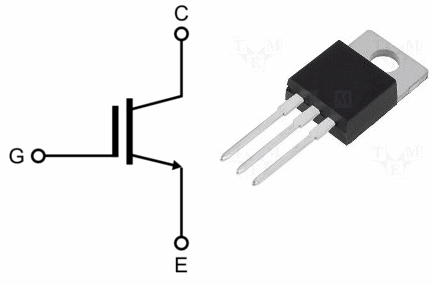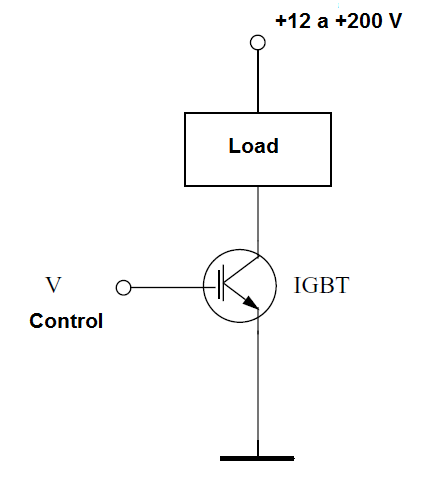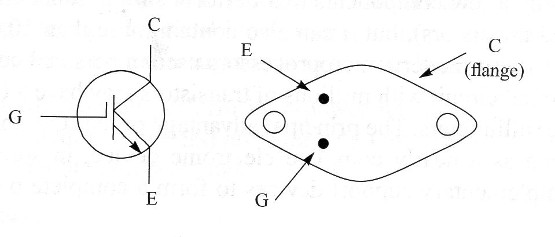The Isolated-Gate Bipolar Transistor or IGBT is a semiconductor device that combines the advantages of a bipolar transistor and a Power MOSFET. They are transistors where the main current or controlled current flows between a collector and an emitter as in a bipolar transistor but it is controlled by a gate voltage as in a FET. The advantage is that the device presents a very high input impedance and the characterístics of commutation or control of a bipolar transistor.
IGBTs are used in the same functions were Power Bipolar Transistor and Power MOSFETs are used and, in some cases, with advantages. They are used in applications where is necessary to drive a high current load (solenoids, lamps, motors, etc).
Figure 1 shows the symbol of an IGBT as the aspect.

As other transistors, we can't identificate an IGBT only by its appearance as they are found using the same packages as bipolar transistors and power MOSFETs. It is necessary have a part number or a schematic diagram of the equipment it is used.
How They Work
IGBTs are used the same way as bipolar power transistor and PowerMOSFETs. In the basic applications they are wired as shown by figure 2.

A positive voltage of some volts applied to the gate element will cause a high current to flow accross the device (between collector and emitter) and the load.
Specifications
The IGBTs are identified by a part number. From the part number, the electrical characteristics can be found. The main characteristics are:
Maximum voltage between collector and emitter
Is the maximum voltage that can be applied to the device. It is also represented by Vce(max).
Maximum collector current
It is the maximum current that can be conduced by the device. It is also abreviated by Ic(max).
Dissipation power
It is the maximum amount of power that the device can convert in heat and transfer to the ambient. It is given in watts and abreviated as Pd(max) or Pd.
Common IGBTs – Table
|
|
2N6975/2N6977 |
2N6976/2N6978 (*) |
|
Collector-Emitter Voltage (max) |
400 V |
500 V |
|
Collector-Gate Voltage (max) |
400 V |
500 V |
|
Gate-Emitter Voltage (max) |
5 V |
5 V |
|
Collector Current (max) |
5 A |
5 A |
|
Power Dissipation (max) |
100 W |
100 W |
(*) Harris Semiconductor

Note: these are old types of IGBTs. Searchin in the Internet you can find thousands of modern types suitable for your projects.




